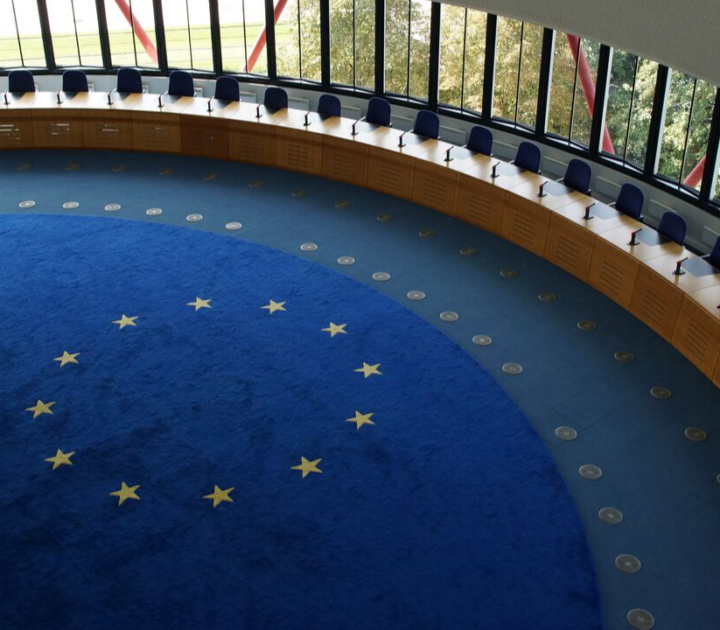Seven tests of a good strategy: sustainability and agility dominate the agenda

In the best of times, a good strategy is a primary factor of success. But in the worst of times – 2020, anyone? – it can make the difference between the life and death of your company. According to Professor Challagalla, asking yourself these seven questions will determine whether or not you’re prepared to make the cut:
Do we have a vision or purpose that provides clear direction?
Determining the right course requires profound thought and careful planning. Your organization’s mission, vision, and goals and objectives are the key driver, so do you know what they are exactly? While many of these terms are now interchangeable, that doesn’t mean customers and staff aren’t paying attention.
“Remember the bulls**t factor,” said Challagalla. “Make your purpose statement as honest and simple as possible; otherwise you risk alienating people.”
Do we have the right portfolio of businesses to achieve our purpose and goals?
Nike would like to make everyone an athlete, but how is such a goal possible? Through a complex, wide-ranging portfolio of businesses to support the company at each step along the way, according to Challagalla.
“It’s the difference between just making athletic shoes and making dozens of different lines of apparel for everyone from the professional basketball player to the amateur runner,” said Challagalla.
Do we have a strong differentiator and competitive advantage?
“You need to ask yourself, at the end of the day, does my company have a competitive advantage?” said Challagalla, suggesting that by riding the wave of transient advantage, you can reduce effort and maximize impact.
What sets your organization apart could be one of the factors outlined in Question 1 – mission, vision or purpose – or something more tangible, like a product or service. Challagalla cited the example of Amazon, which has a mission to be the most customer-centric company.
“If Amazon achieves its purpose, this will certainly be viewed as a competitive advantage,” said Challagalla.
Do we have the core capabilities to win today and the right investment in future capabilities?
Succeeding today is one thing but planning the right amount of investment for future success is quite another. Challagalla warns against making the mistake of disproportionately investing in building future capabilities.
“Yes, there are trade-offs involved,” said Challagalla. “Make your strategic choices looking at the trade-offs – they are irrevocable resource investments.”
While nothing is permanent, some decisions are easy to change, while other might require months, years or even decades of repair work.
Do we have new business models to drive sufficient growth?
a push toward data and managed services to e-commerce, business models are constantly evolving. This happened recently: at the start of the pandemic, companies that tried to enter the e-commerce market for the first time struggled while those that had been in it for some time came out ahead.
“When you see the beginnings of a secular trend – a trend that is likely to make a permanent impact – my advice is to double-down and go twice as fast as your competitors – before you miss the boat,” said Challagalla.
Are we leveraging the entire ecosystem to drive growth?
Partnerships and alliances are important forces for expansion. Co-creating with customers, competitors and start-ups provides opportunities for enhanced growth and can be a win-win situation.
Have you looked into M&As that could provide tools, staff or markets you need to access in order to grow?
“Part of this question relates to disruption,” said Challagalla. “Actively building new concepts and new ideas that could disrupt your own model is key, perhaps as a separate entity.”
Does our strategy have enough flexibility?
Agile organizations that pivot quickly, allowing for rapid change due to continuously changing circumstances, will have an advantage here. With overall uncertainty high – felt across all sectors, industries and geographies due to the pandemic – disruption continues on a daily basis.
“It may be best to keep your assets light rather than putting too many eggs in one basket,” said Challagalla, citing the example of Amazon, which has invested more than $40bil in warehouses alone. “I’m fairly certain the company would have a hard time pivoting tomorrow if it had to!”
If you have a definitive answer for each question, then your strategy is likely solid, said Challagalla. However, taking sustainability and social equity into consideration will be necessary for all companies in the future.
“The push for sustainability is another key factor for success and is the defining issue of our time,” he said. “We can truly create shared value by thinking not just of the shareholders, but of all stakeholders.”
If you enjoyed this webinar and are interested in learning about strategy in more detail with Professor Challagalla, we invite you to discover the following program: Digital marketing strategy (26 April 2021).
Research Information & Knowledge Hub for additional information on IMD publications


in I by IMD 10 April 2024


in Harvard Business Review May-June 2024, vol. 102, issue 3
Research Information & Knowledge Hub for additional information on IMD publications
Research Information & Knowledge Hub for additional information on IMD publications
Research Information & Knowledge Hub for additional information on IMD publications
Research Information & Knowledge Hub for additional information on IMD publications
Research Information & Knowledge Hub for additional information on IMD publications
Research Information & Knowledge Hub for additional information on IMD publications
Research Information & Knowledge Hub for additional information on IMD publications
in I by IMD 10 April 2024
Research Information & Knowledge Hub for additional information on IMD publications
Research Information & Knowledge Hub for additional information on IMD publications
in Harvard Business Review May-June 2024, vol. 102, issue 3
Research Information & Knowledge Hub for additional information on IMD publications